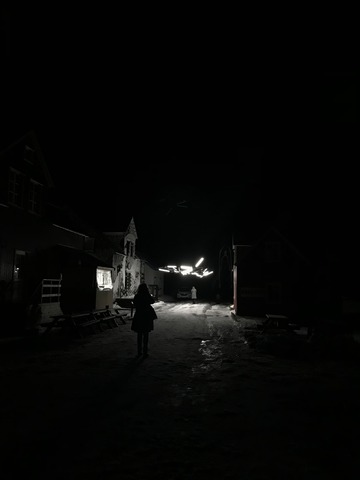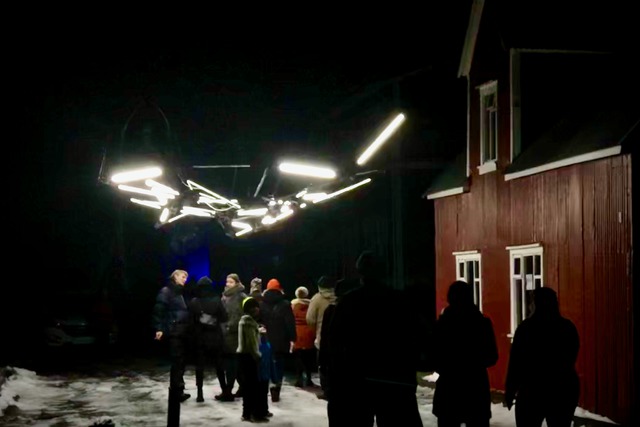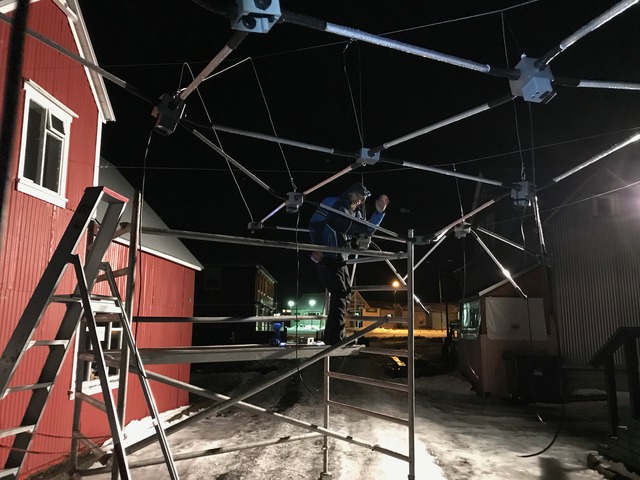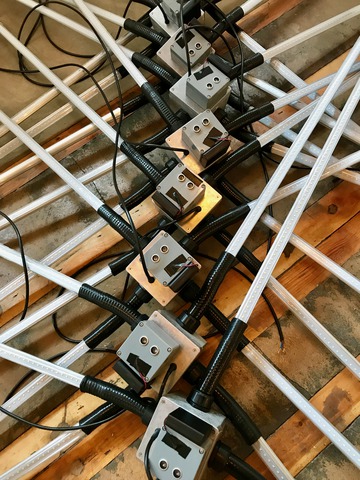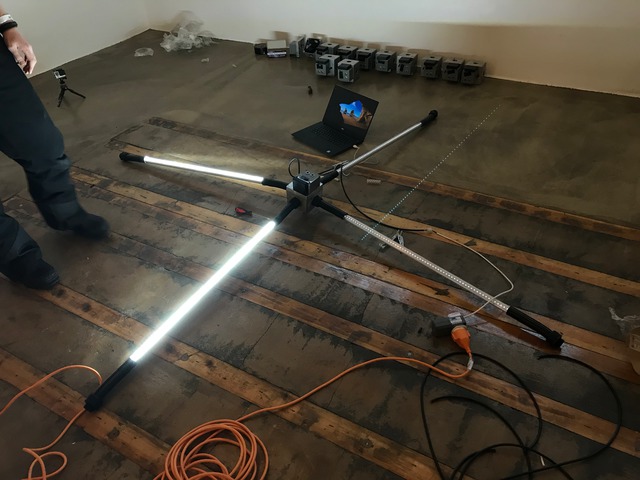Grid:
In the architecture and art of the last 100 years, the grid has occupied a key position. It is a site of analysis, registration, control and calibration. It is the dominant architectural motif.
"...The grid's mythic power is that it makes us able to think we are dealing with materialism (or sometimes science, or logic) while at the same time it provides us with a release into belief (or illusion, or fiction)." - Grids, Rosalind Krauss, 1979 October V.9, Cambridge Mass. MIT Press (p50).
This notion of the classical grid is not engaged with emerging events; it is passive. More recently, Lars Spuybroek suggested an alternative to this passivity which additionally acknowledges the centrality of complex network relations in contemporary spatial discourse: the wet grid - a structure which exists between fluidity and stasis, which escapes the sclerotic grip of the conventional grid while retaining coordinate, quasi-crystalline relations within a parametric system. On the wet grid the body is complex in its makeup, containing tendencies and habits that form groves or lines in less defined areas.
Diagrid:
In construction, the diagrid is a portmanteau term for diagonal grid - an optimised and higher-efficiency structural device than the classical XY rectangular grid, however, we can also think of the diagrid in another way - there is a tension inherent in an alternate reading of its etymology:
dia, as prefix can denote separation or a passing through, so thus can be construed as both dynamic and static. The diagrid is, then, a site of negotiation between place, position, motion and stasis, a form of wet grid. This proposal is to produce such a diagrid, an adaptive, responsive material system: a cable-supported responsive flexible grid of light, produced by RGB LED Neon. As people approach and pass beneath it, proximity sensors activate regions of intensity. Grids and networks of varying types are found throughout the natural world, from the structure of cells in plant matter to the eyes of insects, to the web of neurones in a nervous system: this diagrid is, as has been noted, a 'wet' grid - which is to say it is adaptable to position and like a simple organism it exhibits trophic responses in response to stimuli, in this case, peoples' movement.

